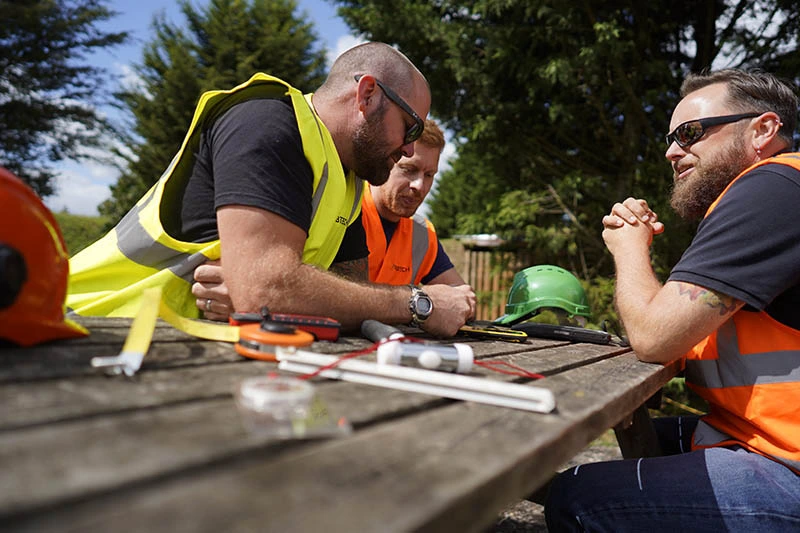
Invertebrate Surveys for Conservation
Between the construction of new housing estates and various infrastructure projects, new developments can cause a big impact on the natural environment.
Although they’re often overlooked, invertebrates like bees, beetles and butterflies are vital to the ecosystem, and all sorts of development proposals are capable of threatening their habitats.
With this in mind, understanding the presence of invertebrate populations is an important part of modern conservation and planning. To properly protect them, the recommended step to take would be to arrange an invertebrate survey on the site.
What is an Invertebrate Survey?
An invertebrate survey is a specialist type of ecological assessment for protected invertebrate species throughout the country. It involves visiting a development site to identify all terrestrial and freshwater invertebrates living there before going on to evaluate the quality of their habitats.
During an assessment, the focus is on determining if any rare or important species of invertebrates are present. With that information, it will be possible to work out their contribution to the site’s overall ecological value and go on to produce methods of allowing the development to continue without harming any species or habitats.
Due to invertebrate surveys often targeting terrestrial invertebrate species, freshwater invertebrate species are given a separate type of assessment known as an aquatic invertebrate survey.
What Invertebrate Species are in the UK?
Across the UK are many different protected invertebrate species, with each of them given full or partial legal protection under the two main laws of the Conservation of Habitats and Species Regulations 2017 and the Wildlife and Countryside Act 1981, as well as featuring within the Natural Environment and Rural Communities Act 2006 (often better known as the NERC Act).
Certain types of wildlife are given the highest level of protection, classifying them as European protected species and preventing anyone from being able to capture, kill, injure or disturb them, or cause any form of damage to their habitats.
In total, over 100 terrestrial and freshwater species are protected by UK legislation. Examples of species and categories include:
European Protected Species
- Large Blue Butterfly (Phengaris arion)
- Fisher’s Estuarine Moth (Gortyna borelii lunata)
- Lesser Whirlpool Ram’s-Horn Snail (Anisus vorticulus)
Fully Protected Species
- Annelids (Worms): Medicinal Leech
- Crustaceans: White-Clawed Crayfish
- Insects: Field Cricket, Marsh Fritillary Butterfly, Mole Cricket, Norfolk Hawker Dragonfly, Swallowtail Butterfly
- Molluscs: Freshwater Pearl Mussel, Glutinous Snail, Sandbowl Snail
- Spiders: Fen Raft Spider, Ladybird Spider
Partially Protected Species
- Beetles: Rainbow Leaf Beetle, Stag Beetle, Violet Click Beetle
- Butterflies: Adonis Blue, Duke of Burgundy Fritillary, High Brown Fritillary, Purple Emperor
- Moths: Barberry Carpet, Black-Veined, New Forest Burnet
At What Point Would Someone Need an Invertebrate Survey?
Developers and planners may need invertebrate surveys as part of the application for planning permission.
When it comes to making planning decisions, the local planning authorities will consider the impact on wildlife. If invertebrates are on the development site and the plans of the project could negatively affect them or their habitats, planning permission cannot be granted without the evidence of a suitable assessment.
An ecological survey could flag the need for an invertebrate survey, such as a preliminary ecological appraisal (PEA) or an ecological walkover survey. Alternatively, an applicable species could appear during another type of specialist ecology survey, such as a botanical survey, great crested newt survey, otter survey, reptile survey or water vole survey.
Survey Standards for Invertebrates
As professional ecological consultants, we conduct all our survey work to the highest standards, following industry-recognised guidance to ensure that our data is suitable for your needs.
In the section below, we provide information on how we undertake an assessment.
Invertebrate Survey Methodology
The process for carrying out an invertebrate survey follows the steps below:
1. Desk Study
Starting the process by reviewing existing data and records for your site, checking for any known designated sites and historical species records.
2. Site Visit
Visiting the site to identify all potential habitat types that could support important invertebrates.
3. Targeted Field Surveys
Using the techniques laid out below to carry out the assessment, targeting the species likely to be present.
4. Analysis
Evaluating the data in a laboratory to identify all species found and assess the site’s overall importance for invertebrates.
5. Mitigation
Working with you to design practical mitigation plans if protected species are found and, if necessary, applying for mitigation licences from Natural England.
6. Reporting
Compiling a comprehensive invertebrate survey report that details our findings, such as the notable species on the site, negative effects from the project, steps for moving the development forward, and recommendations for further surveys.
Invertebrate Survey Guidelines
We follow all official guidelines to ensure that each and every planning project we work on is compliant. All of our surveys follow the scientific and pragmatic techniques required to gather data without breaking these laws, and our invertebrate surveys are no different.
The law enforces protection for many species, making it an offence to deliberately capture, injure, kill or disturb them. It also insists on protection for their habitats, making it illegal to damage, destroy or block access to any areas used for breeding or shelter.
Invertebrate Survey Techniques
Between traditional terrestrial invertebrate surveys and specialised aquatic invertebrate surveys, our team has to use a wide range of methods. For instance, our ecological consultants could work with:
- Direct Observation: Identifying active species by sight
- Direct Searching: Checking deadwood, leaves and stones for active species
- Light Trapping: Attracting moths using a special type of lamp
- Pitfall Trapping: Catching ground-dwelling insects with small cups in the ground
- Suction Sampling: Collecting small insects from vegetation using a special type of vacuum
- Sweep Netting: Examining long grass and vegetation using a special type of net
Invertebrate Surveying Equipment
While it will vary depending on the habitat, our ecologists will need to be fully equipped with all of the necessary specialist gear for conducting an assessment. Examples of invertebrate survey equipment include:
- Beating Trays
- Field Microscopes
- Hand Lenses
- Moth Traps
- Pitfall Traps
- Pond Nets
- Pooters
- Sieves
- Specimen Pots
- Sweep Nets
- Waders
Invertebrate Survey Timings
All protected species surveys take place at different times, with the activity and behaviour of the specific wildlife category deciding when the best time for an assessment is.
In the case of invertebrates, the best time for surveys is between April and September, as this is when the majority of species are active, making assessments most effective.
We understand that the timelines of developments are tight, especially in rural communities where seasonal work is more common. When it comes to arranging an invertebrate survey, our team will work with you to find a suitable time for accessing your site, completing the checks and creating a report without holding up the schedule of your planning project.

Get Invertebrate Survey Analysis from Our Team
A complex but essential part of the planning process, invertebrate surveys are unavoidable if notable species are on your site and likely to be affected by development proposals.
Our team has worked with all habitat types, from complex brownfield sites and woodlands to sensitive special areas like heathlands and coastal areas. From there, if our ecological consultants discover any terrestrial invertebrates or freshwater invertebrates, we will know what to do and can guide you through the next steps.
Book an Invertebrate Walkover Survey Now
With our help, you can get the terrestrial invertebrate surveys you need, moving on to aquatic invertebrate surveys if necessary. An ecological consultant from Arbtech can also ensure you remain within legal protection requirements, help you with creating new habitats to boost the ecological value of your site, apply for mitigation licences from Natural England, and utilise the correct survey techniques based on your circumstances.
If you speak to our team directly, we can see if you need an invertebrate survey and give you a free quote based on the goals of your project and the specifications of your site. You can do this by calling us, completing a quote form on our site or emailing us. As soon as we’ve heard from you, we will start putting your quote together, and if you want to move forward with us after seeing it, we can start helping you out and supporting your planning application.


